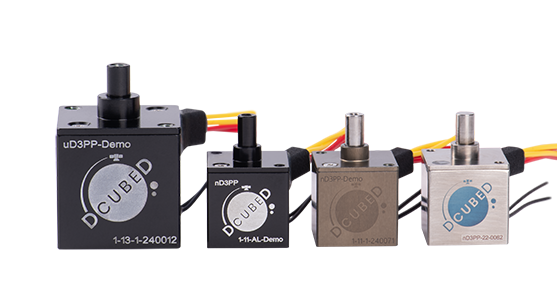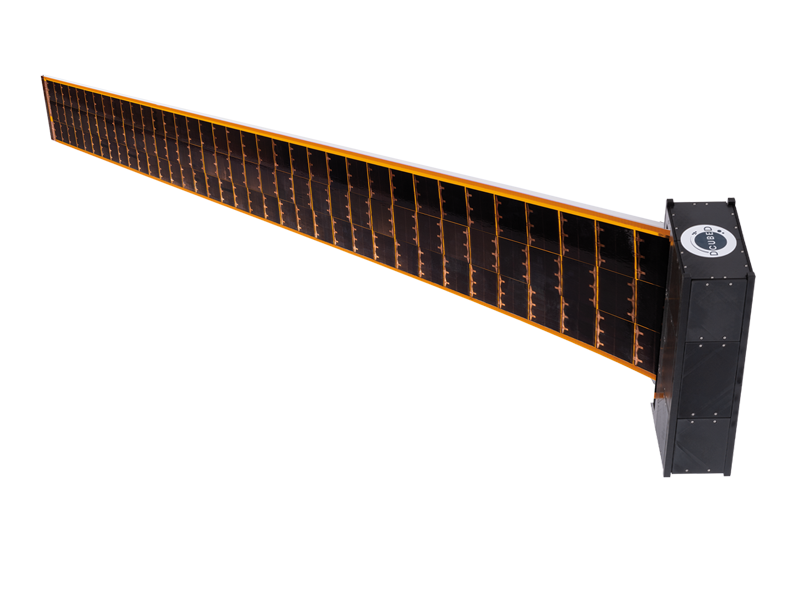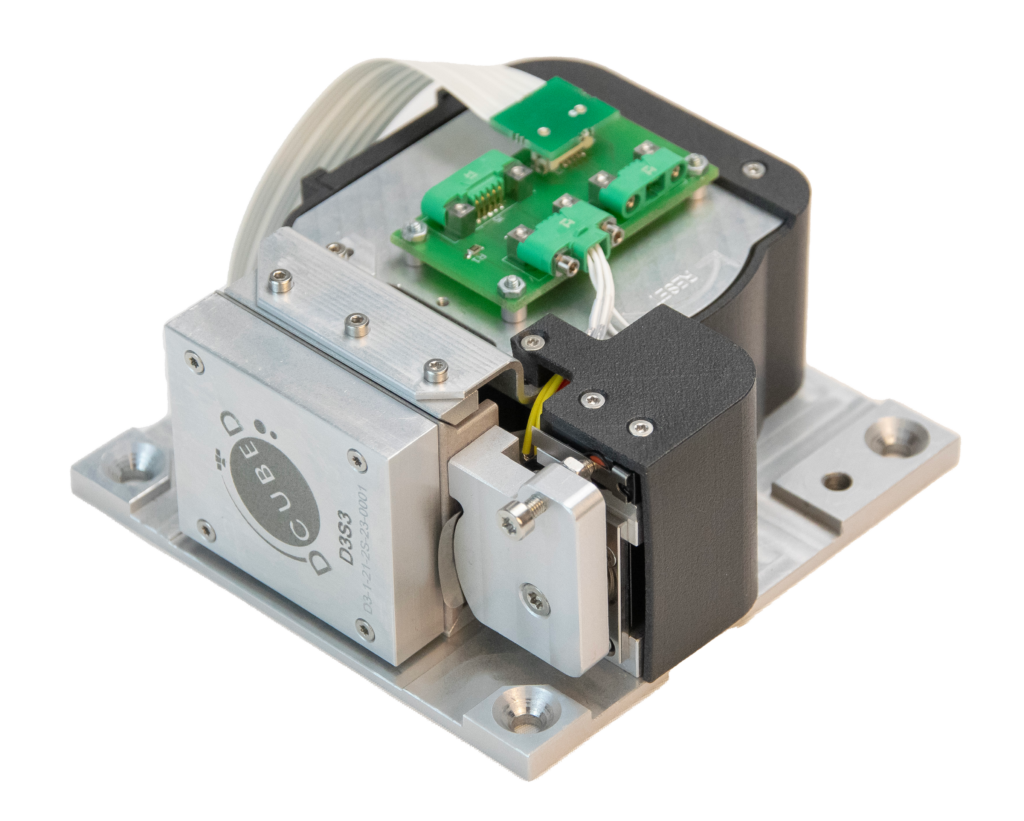Actuators, Solar Arrays & Deployables
We use patented, shape-memory technology and proprietary origami mechanical structures to improve space technology in terms of cost, mass, reliability and reusability.

Release Actuators
Safely secure and release delicate space hardware on orbit with patented Hold-Down Release Mechanism (HDRM).

SmartPack Release Nut

Release Nuts

Pin Pullers
Space Release Actuators or HDRMs – Hold Down Release Mechanisms. In short form, they hold things down during launch and then release them in space when and how you want to release them. Any mechanical mechanism traveling on a rocket needs a space release actuator to keep them secured and steady during launch and liftoff. Space release actuators are mission critical: small but mighty.
Pin Pullers – Mechanisms that when activated, have pins that drop into the space release actuator. DCUBED’s Space Pin Pullers are the smallest on the market today. It’s like a tiny door jam that blocks a hinge from opening, and then is retracted.
Product advantages – smaller and lighter, can be tested hundreds of times before launch easily, almost eliminates all shock, is less expensive, has already been used in space missions successfully and is in stock and ready to turn an order around quickly.
Product specifications – they’re small. A nano is the size of your thumbnail. A micro is the size of a LEGO figure.
Release Nuts – Mechanism that has a pin (or nut) similar to a pin puller, but this time the pin is attached to another surface that’s being held closed by the release nut actuator. In space, the device releases the nut away from itself so the deployable can open.
Smartpack Release Nut – This is an ultra-flat release mechanism for when thickness is limited. Best for securing two things that need to be very flush to each other. Can easily be installed on the outside of the satellite to not take up any volume inside your spacecraft. Because it’s so flat, it allows for more possibilities for releasing hinged or rotating objects.
Solar Arrays
Get your turn-key power generation subsystem including launch lock, substrate and solar cells.

Origami Solar Array

Rigid-Deployable Solar Array

Body-Mounted Solar Array

Flexible Blanket Solar Array
Solar arrays – You want your surface area to grow into maximum outstretched wingspan in space to generate as much power as possible, and DCUBED solar arrays allow you to maximize your power to energize your power needs in space.
Origami Solar Array – our origami solar array folds into a box that unfurls in space to reach maximum wingspan. It is secured by one of our release actuators.
The Blanket Solar Array unrolls in space. The advantages are low surface area during launch and vibration resistance; imagine the space in a recreational vehicle awning and this is an good idea of how this blanket solar array works with a .
The Rigid-Deployable Solar Array swings open or can be affixed to the side of a deployable.
The Body-Mounted Solar Array is mounted to a satellite to provide low to medium power requirements and does not move.
Deployables
Get the most out of your SmallSat mission by taking advantage of our high-performance deployable solutions.

Space Selfie Stick

Reflect Array Antenna

Deployable Radiator
These are devices which are generally attached to a satellite/deployable item that is going directly into space to serve a support function. The main advantage of space deployables are that they are small on the ground/during launch and huge in space, kind of like an umbrella is on Earth.
Space Selfie Stick – A camera on a deployable arm that allows pictures and video to be stored or potentially sent back to earth. It can be pointed at the satellite for monitoring, or other items that engineers may want to record. Great for investors and teams to see the results of their work (and great for the marketing team, too!)
Reflect Array Antenna – This mounts to a satellite, and is a radio antenna designed to send signals (radio/data) for small satellites aimed at the Earth. As it unfolds in space, it can achieve much better performance levels than classical, non-deployable antennas.
Deployable Radiator – The sun is HOT, especially moreso in space. The raidiator helps cool down space payloads/satellites that may need to run at a certain temperature. By increasing the radiating surface area, much better performance can be achieved and more heat can be dissipated.
Manufacturing

In-Space Manufacturing
Unlock the Boundless Potential of Space Exploration with the Future of Manufacturing.
In Space Manufacturing is the process of 3D printing in space to build platforms that would not normally fit inside a rocket fairing.
DCUBED will be the first company to perform in space manufacturing in free space (not in an enclosure, but out in open space) in the first half of 2024, aiming to manufacture giga structures (football field sized or larger) in the years to come.
DCUBED Advantages
Increase efficiency
Reduce AIT costs by 23% with critical pre-mission development and testing time
Cost savings
Save 31% in costs in comparison to competitor's products
Risk reduction
Reduce mission risk with increased testing flexibility, ease-of-use and resettability (i.e., 400+ reset cycles)
Mission-critical
Be prepared for any situation with 100% actuation redundancy
Maximum durability
Optimize reliability and reuse with fully passive subsystems
Lighter and smaller
Reduce weight by 34% and volume by 44% with release actuators that small and mighty
Piece of mind
Enjoy peace of mind with DCUBED's test-as-you-fly and fly-as-you-test approach
E-commerce approach
Buy the most advanced space subsystems the same way you buy groceries online and increase buying speed by 90%
Global reach
Enjoy less hassle with 100% export control-free products that are designed and manufactuired in Europe